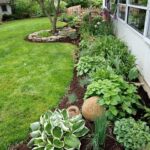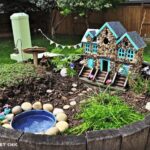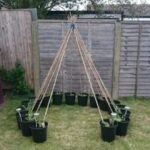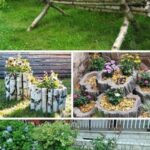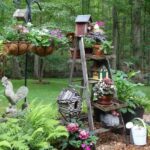Landscaping your property can be a rewarding and fulfilling experience. Not only does it increase your home’s curb appeal, but it also provides a sense of accomplishment and pride in creating a beautiful outdoor space. While hiring a professional landscaper can be a great option, many homeowners prefer the DIY approach to save money and add their personal touch to their outdoor space.
If you’re new to landscaping and don’t know where to start, don’t worry! With some basic knowledge and a little bit of creativity, you can transform your yard into a stunning oasis. Here is a beginner’s guide to DIY landscaping to help you get started:
1. Assess Your Property: Before you begin any landscaping project, it’s important to assess your property to determine its strengths and weaknesses. Take note of the existing features such as trees, shrubs, and structures, as well as any areas that may need improvement. Consider factors such as sun exposure, soil quality, and drainage to help you choose the right plants and design elements for your space.
2. Set a Budget: Once you have a clear idea of what you want to achieve with your landscaping project, it’s important to set a budget. Determine how much you are willing to spend on materials, tools, and plants, and prioritize your expenses accordingly. Remember that landscaping can be a long-term investment, so it’s okay to start small and gradually build upon your design over time.
3. Create a Plan: Before you start digging and planting, it’s essential to create a landscaping plan. Consider the layout of your yard, the type of plants you want to incorporate, and any hardscaping features such as pathways or seating areas. Sketch out a rough design on paper or use online tools to help visualize your ideas and make adjustments as needed.
4. Start Small: As a beginner, it’s best to start with small projects and gradually work your way up to more complex designs. Focus on one area of your yard at a time, such as a flower bed or a small garden, and experiment with different plants and arrangements to see what works best for your space. Remember that landscaping is a learning process, so don’t be afraid to make mistakes and learn from them.
5. Choose the Right Plants: When selecting plants for your landscaping project, consider factors such as climate, sun exposure, and soil conditions. Choose a mix of perennials and annuals to add variety and texture to your garden, and don’t be afraid to experiment with different colors and heights to create visual interest. Visit your local nursery or garden center for expert advice on choosing the right plants for your space.
6. Maintain Your Landscape: Once your landscaping project is complete, it’s important to maintain your outdoor space to keep it looking its best. Regular watering, weeding, and pruning are essential tasks to ensure the health and longevity of your plants. Consider investing in quality tools and equipment to make the maintenance process easier and more efficient.
In conclusion, DIY landscaping can be a fun and rewarding experience for beginners looking to enhance their outdoor space. By following these simple tips and guidelines, you can create a beautiful and inviting landscape that reflects your personal style and enhances the overall aesthetic of your home. So grab your shovel and get started on your DIY landscaping project today!



